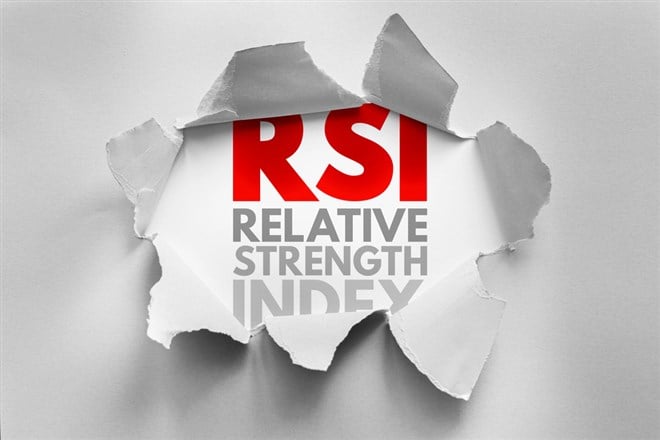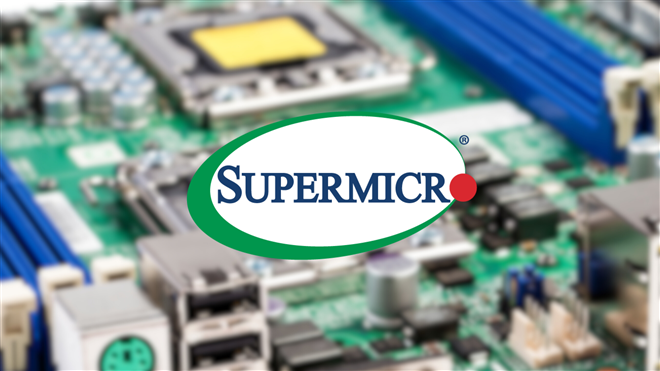Ticker Reports for August 25th
Take Profits Now: 3 Overbought Stocks Primed for a Pullback
One of investors' most challenging questions is when to sell a winning stock. No one ever went broke taking profits, but exiting a high-flying stock too early can cause FOMO and create the temptation to chase. On the other hand, high-flying stocks eventually get too close to the sun, and it’s preferable to take profits before this Icarus moment.
Traders often use technical indicators to spot changes in momentum before prices can react, and today, we’ll examine three stocks sending signals that it might be time to hit the cash register.
Technical Signals Can Help Identify Reversals Preemptively
Technical analysis can help predict short-term price movements in ways that fundamental metrics cannot. Long-term stock price trends (usually) depend on revenue and profit, but short-term prices are a mix of sentiment, volume, and randomness.
You’ll never know exactly why a stock drops 10% in a week because a million investors can all have a million different goals. But you can try to predict when it will happen using indicators like the Relative Strength Index (RSI).
The RSI is a momentum indicator designed to detect the strength of a trend and provide hints on when that trend might be headed for a reversal. Swing traders have been using RSI for nearly 50 years now, and it's one of the most commonly used oscillators by those utilizing momentum strategies.
The RSI measures the strength of a trend by comparing the average gains and losses of a security over a 14-day period. These averages are charted on a graph ranging from 0 to 100, with 30 representing the Oversold threshold and 70 representing the Overbought threshold.
An overbought stock is one where a high price hides fading momentum under the surface, which is why short-term traders use it as evidence of a potential pullback.
The RSI measures changes in momentum, which is a very particular metric and shows why the RSI is best used in tandem with other oscillators like the Moving Average Convergence Divergence (MACD) indicator. False signals are common, so always compare the RSI with other indicators like the MACD or 50- and 200-day MAs to confirm or deny your thesis.
3 Stocks Flashing Overbought Warnings
The following three stocks have had a lot of success in 2025, but recently tripped the Overbought signal. Each also has weakening momentum confirmed by another metric, indicating that it might be time to take profits before these stocks get too extended.
Reddit: Blowoff Top Following a Record Run
Shares of Reddit Inc. (NYSE: RDDT) began trading last year on March 21, and closed that day at about $50 per share. Within a year, the stock had more than quadrupled to $224, but this was no meme stock.
Strong earnings and investors' enthusiasm have boosted the stock, and these numbers remain solid.
During its Q2 2025 report, Reddit notched 45 cents per share in earnings and just a tick under $500 million in revenue.
Both figures handily blew away expectations, and revenue grew 78% year-over-year (YOY).
Shares surged following the report, but now the momentum appears to be waning after a 121% gain in just three months. The RSI has flashed an Overbought signal twice this month, and now the MACD is also forming a bearish cross, confirming the softening uptrend.
A move back into the post-Liberation Day trading range wouldn’t be surprising for RDDT shares here.
Altria Group: Unsustainable Momentum for a Defensive Stock
Investors aren’t usually looking for outsized stock price growth when buying shares of Dividend Aristocrats like Altria Group Inc. (NYSE: MO).
But economic and geopolitical uncertainty have pushed the stock up nearly 30% year-to-date (YTD), and shares are up 13% in the last month alone.
During this run, the stock has hugged its 50-day moving average tightly, but now shares have ripped more than a standard deviation above that support level, an usual occurrence for a consumer staples stock.
As you might have guessed, this recent surge has triggered an Overbought reading on the RSI, which is the first time the 70 level has been breached since December 2024.
The stock pulled back about 10% during that last episode before finding support at the 200-day MA. This time, the RSI has drifted above 80, and a pullback toward the 50-day MA is a concern.
Generac: Investors Cashing Out Despite Strong Earnings
Generac Holdings Inc. (NYSE: GNRC) has a similar story to Reddit; strong earnings have created a blowoff top, prompting investors to anticipate a slowdown.
The company released Q2 2025 earnings before the market opened on July 30, posting a strong top and bottom line beat while increasing guidance on the lower bound of its adjusted EBITDA margin.
The stock accelerated above $200 in the weeks following the report, but now momentum is teetering as the RSI triggers an Oversold signal and the MACD forms a bearish crossover.
Volume has been light in recent sessions, and it appears investors are cashing in their gains with no upcoming catalysts on the horizon.
Did you spot this in the Oval Office last week?
Did you spot this in the Oval Office last week?
AI Exposure Without the Hype: 3 ETFs That Offer Smarter AI Bets
Though it's far from a new approach, many exchange-traded funds (ETFs) aiming to provide exposure to the much-hyped artificial intelligence (AI) space tend to lean fairly heavily on a small number of big names. NVIDIA Corp. (NASDAQ: NVDA), for example, is the single largest holding of the popular Global X Robotics & Artificial Intelligence ETF (NASDAQ: BOTZ) fund, representing nearly 12% of the entire portfolio. Even among broad-based tech ETFs like the iShares U.S. Technology ETF (NYSEARCA: IYW), a company like NVIDIA represents about 17% of the fund's invested assets.
Some investors may seek out ETFs like these because they are weighted toward a handful of extremely popular names in the AI space. However, in a fast-growing and ever-shifting industry like AI, a wide net may better help investors to capture gains from lesser-known or up-and-coming companies. Fortunately, there are a number of AI-centered ETFs that focus on a broader set of names covering different aspects of the AI space.
Broad Group of Companies Involved in AI in Different Capacities
First Trust Nasdaq Artificial Intelligence and Robotics ETF (NASDAQ: ROBT) targets companies in AI as well as robotics and automation. Companies are classified as enablers, engagers, or enhancers of these technologies, per the Consumer Technology Association (CTA), and weighted in the fund such that those designing, building, or facilitating AI or robotics via products and software make up the majority of the portfolio.
The result is a fund with just over 100 holdings that is remarkably well diversified and includes many companies off the traditional beaten path in the AI space. As of mid-August, for example, the largest holding in the fund is robotics warehouse automation firm Symbotic Inc. (NASDAQ: SYM), but this position only represents 2.4% of the full portfolio. Investors can thus turn to ROBT for access to a variety of lesser-known companies still deeply engaged in AI.
Year-to-date (YTD), ROBT has returned 9.7%, slightly above the S&P 500 and the Magnificent Seven as a group. The fund's expense ratio is 0.65%, fairly middle-of-the-road for a specialized ETF strategy such as this.
Narrower Focus, Stronger Results
While ROBT uses CTA classifications to explore firms linked to AI, the iShares Future AI & Tech ETF (NYSEARCA: ARTY) has its own approach. The company tracks the Morningstar Global Artificial Intelligence Select Index, which is made up of firms currently or expected to be critical to the development of generative AI, AI data and infrastructure, AI software, and AI services.
This wide net yields around 50 holdings in ARTY's basket, with the largest receiving about 5.9% of invested assets. The top ten holdings list includes lesser-known names like PTC Inc. (NASDAQ: PTC) and Japanese semiconductor component maker Advantest Corp. (OTCMKTS: ATEYY).
ARTY's assets under management (AUM) and trading volume both beat ROBT's easily, meaning that investors are unlikely to face liquidity risks with this fund. Its expense ratio of 0.47% is also more competitive, although it should be noted that ARTY only provides exposure to about half the number of companies as ROBT. With a return of 11.4% YTD, though, ARTY may be a more compelling case on performance alone.
International Aim and Combination of Well-Known and Lesser-Known Names Yields Impressive Returns
The Robo Global Artificial Intelligence ETF (NYSEARCA: THNQ) also offers a wide view of AI firms, including those that enable AI applications via computing, data, and cloud services as well as applying the technology across various verticals. With a strong international focus, the 55 stocks making up THNQ's portfolio represent the developed markets broadly.
The largest holding in the THNQ group occupies about 3.3% of the portfolio. And though high-profile names like NVIDIA are included in the list of positions, THNQ also includes a number of smaller or more obscure AI companies. The mix of different companies has worked well for this fund—it has the strongest returns of 2025 among all three of the ETFs on this list, with a YTD performance of 14.5%. In exchange, investors will pay slightly more in fees. THNQ has an expense ratio of 0.68%, only slightly higher than ROBT above and still well below fees associated with actively managed funds.
How 8,000+ investors trade crypto with a 93% win rate
How 8,000+ investors trade crypto with a 93% win rate
Super Micro Computer Stock Hasn't Priced in Growth Yet
Speculation and news headlines aside, there is a pretty simple way for investors to know whether a stock has priced in its future growth yet or not, creating a reliable manner to measure whether they should stay invested in a company through the hard times or whether it is time to liquidate and go hunting for the next best deal. This can all be done with a single ratio.
This ratio is widely used amongst Wall Street professionals. The price-to-earnings-growth (PEG) ratio attempts to measure where a stock’s valuation is today relative to where analysts believe tomorrow’s earnings per share (EPS) growth can be.
Any reading below 1.0x in this ratio suggests that not all growth has been priced in, meaning more upside potential could be had in the future.
For shares of Super Micro Computer Inc. (NASDAQ: SMCI), this ratio gives investors a clear-cut answer as to whether they should worry about the recent price action after the company reported its latest quarterly earnings report. It connects the dots as to why the financials seemed negative initially, but are a quiet bullish signal for savvy investors going forward.
Why Super Micro Computer’s PEG Ratio Signals Growth Potential
For Super Micro Computer, the markets are placing a forward price-to-earnings (P/E) ratio of only 14.0x today, giving investors very little information. However, when combined with future EPS forecasts, specifically the forward EPS readings for $3.13, the PEG ratio can become one of the most important anchors in this name.
All told, Super Micro Computer stock offers a PEG of only 0.6x today, meaning that roughly 40% of the company’s future expected EPS growth has yet to be priced into today’s valuation metrics.
This gives investors meaningful upside should they include this company in their portfolios.
Of course, the technology sector in the United States has been red hot lately, with the growth and adoption of artificial intelligence and all the lateral plays that are born out of it. With the growing demand for data centers and semiconductors, Super Micro Computer holds a special position in both industries, contributing to a broader market trend.
This is why analysts feel comfortable forecasting so much growth to begin with, but also why $1 billion worth of institutional buying has taken place over the most recent quarter, despite the stock falling after announcing its earnings results and now trading at only 66% of its 52-week high levels.
Leading the pack in this new buying were those from Disciplined Growth Investors Inc., holding 1.6% of the company through a $476.9 million stake. This is a vote of confidence for investors to consider moving forward and a potential confirmation that this discounted PEG could provide additional upside potential.
Data Center Demand Fuels SMCI’s Long-Term Growth Outlook
Now that investors understand this bullish setup, they can begin to see where the other dots start to connect as well. For instance, over the past month, 2.6% of the company’s short interest was wiped out as a sign of initial bearish capitulation, as short sellers know how unfavorable it would be to bet against this company’s future.
However, there are still $5.3 billion worth of open short positions, enough to create what’s known as a “short squeeze.” This event happens when a stock rallies aggressively enough to force short sellers into closing their positions at a loss, which also involves buying back the stock they borrowed to sell short.
In other words, a short squeeze creates additional buying pressure for a forceful move higher, and this time, there is enough room for upside in Super Micro Computer for this to be the case. Specifically speaking, Wall Street analysts have honed in on a consensus on where EPS could be headed.
At the heart of this growth discount is the forecast for 74 cents in earnings to be reported by Super Micro Computer in the fourth quarter of 2025, a significant jump from today’s reported 41 cents in earnings.
As most investors know, EPS growth typically drives stock price growth.
This is especially true when the current price does not reflect this future projection whatsoever, a phenomenon that investors can take advantage of today with Super Micro Computer stock, especially as demand for more efficient data centers grows across the United States, calling on the company’s services to help fulfill this new vision.
Alert: Prepare for Trump's Dollar Overhaul
Alert: Prepare for Trump's Dollar Overhaul







0 Response to "🌟 Take Profits Now: 3 Overbought Stocks Primed for a Pullback"
Post a Comment